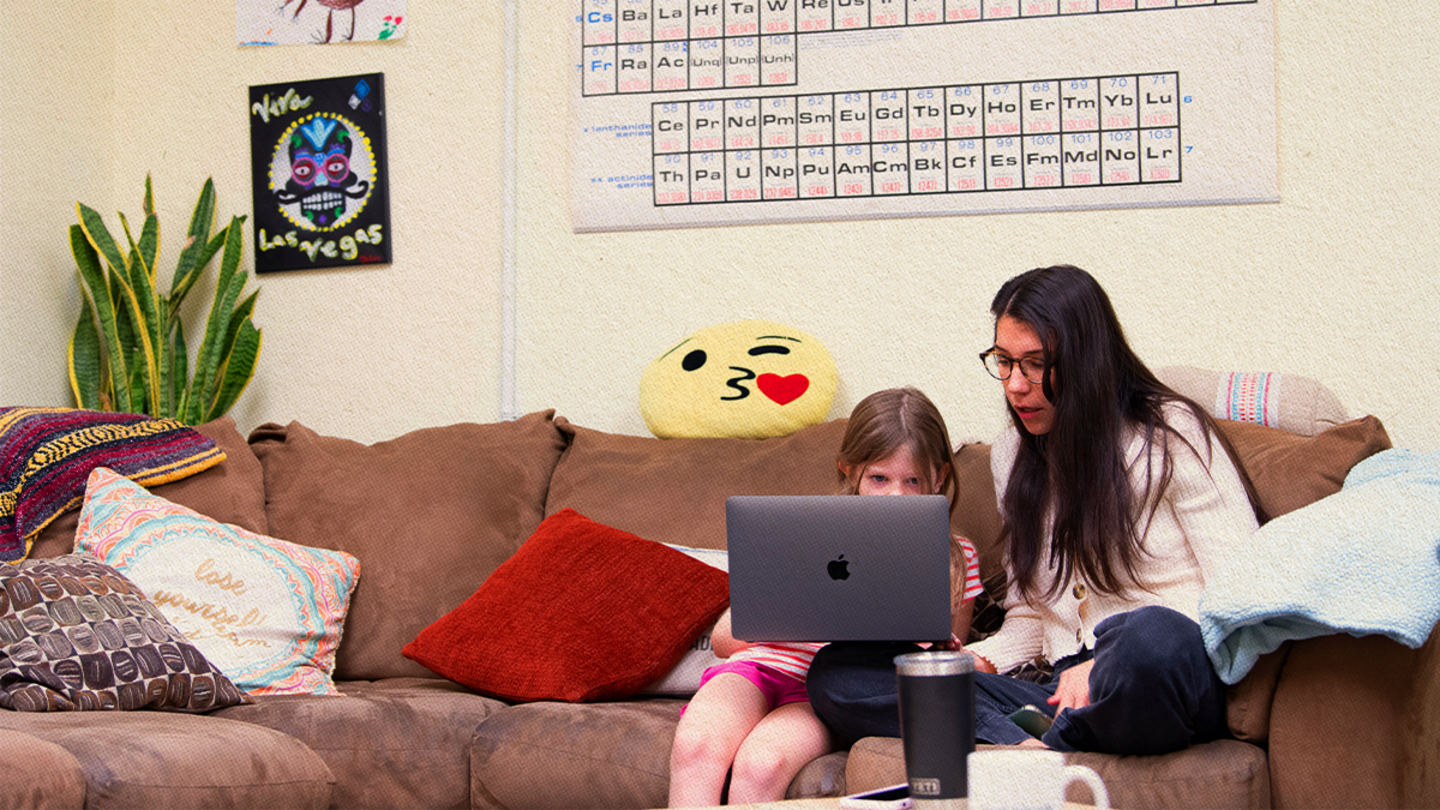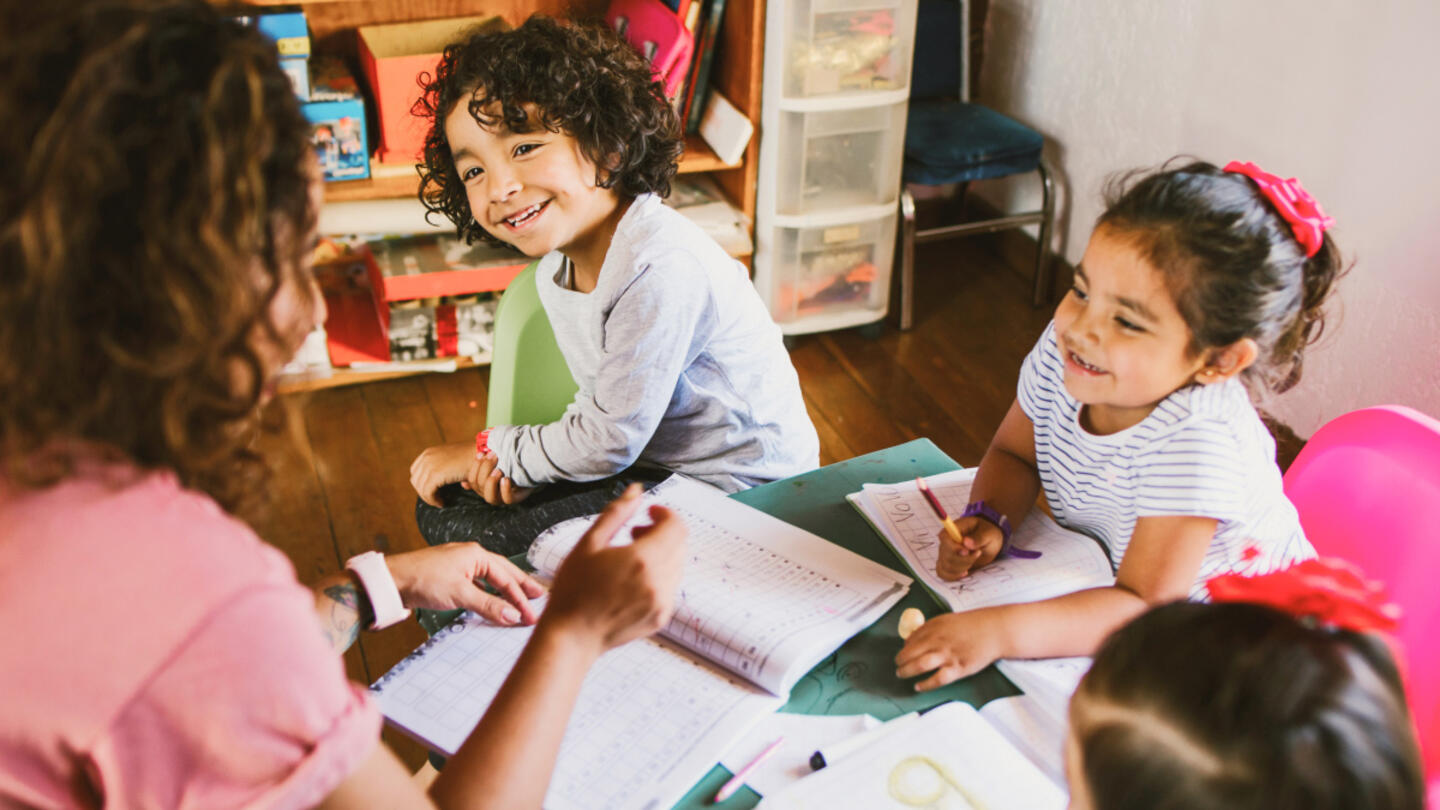By age 16, Nick Marta had attended six different schools. He had faced so many negative experiences at school that his mother, Justine Russell, couldn’t recall a time when he had ever liked going.
“It was heartbreaking because education should be fun, but for him, it was terrifying,” she said. Determined to find a solution, she continued looking for an education model where Nick could grow and be happy.
Russell is one of millions of parents with a job to do: She wants her child’s education to ignite his curiosity and help him thrive — not make him feel broken or out of place.
Parents like Russell are quietly making choices that best serve their children’s needs. And together, they’re reshaping the landscape of K-12 education.
Since 2020, over 1 million students have left public schools, and alternative education models have seen enrollments more than double. Each departure reflects a parent’s critical decision to seek a different educational path. What drives families to make these changes? Why are parents seeking new learning environments for their kids?
These were the questions researchers asked in a recent study conducted by the Christensen Institute in partnership with VELA and The Re-Wired Group. The study applies the Jobs-to-be-Done Framework, which suggests that people adopt new solutions when they experience struggling moments. The specific challenge or problem they are trying to solve becomes their “Job.”
“It’s about understanding situational context,” said Meredith Olson, president of VELA. “What factors influence a customer to make a switching decision?”
With a community of over 3,000 founders providing low-cost, innovative educational solutions outside traditional schooling, VELA and its partners identified three key motivations families have when they transition to microschools.
We sat down with Olson to gain insight into these personal decisions that could impact the future of education in America.
Why did you make that choice?
The theory behind the study starts with a simple idea: Everyone seeks progress. This progress unfolds amid various life challenges, with decision-making shaped by specific circumstances that can either support or hinder that desire to grow and thrive.
Just like hiring a plumber to fix a leak or a lawyer to build a case, people “hire” solutions to help them navigate other struggles — like their child’s frustrations with education.
But it’s not enough to ask a hypothetical question.
“Marketing studies will survey customers to try to understand what would [potentially] cause them to make a decision,” said Olson. In contrast, the VELA-Christensen study focused on families that had already made educational choices, digging deeper into the factors behind those decisions.
“It’s not just surface-level detail,” Olson explained. “It’s a series of very intense, probing questions to understand the full context of what ultimately led to a decision.”
The goal was to capture the unique circumstances and challenges that shaped each family’s journey toward innovative learning environments like microschools.
Analyzing these narratives revealed three common sets of circumstances that drove families to choose alternative education models.
1. Parents want a learning environment that honors their values.
Like many parents, Alycia Wright and her husband planned their family’s life around their children’s education. They chose their neighborhood because of the schools.
“We live in a really great neighborhood,” she told Kerry McDonald, host of the LiberatED Podcast. “They’ve got top schools, top scores. We moved there for this reason.”
Wright hoped her kids would thrive in the public schools near their home. However, when she went to enroll her daughter in kindergarten, she encountered an indifferent staff who dismissed her daughter’s unique gifts. A meeting with the principal left her feeling unheard and disheartened.
She started looking for an alternative that aligned better with her academic and cultural priorities for her daughter’s education.
Sign up for Stand Together's K-12 newsletter and get stories, ideas, and advice from changemakers who are transforming education across the country.
“This type of parent wants their children to be educated in ways that are consistent with their values,” said Olson. “This parent wants to be heard, and they make a switch when they feel that they don’t have a voice, that they don’t have influence over their child’s education.”
For the parents in this category, it’s more about their own comfort level than the child’s experience. It stems from disagreements with the school’s curriculum or philosophy, which parents may find objectionable or lacking depth. Any perceived lack of communication with the school compounds these issues
“Parents want to be engaged,” said Olson. “They want to know that their child is being educated consistent with their values. If they’re not seeing that, they will make a switch.”
2. Parents seek change for their child who isn’t thriving.
When Russell noticed her son wasn’t thriving, she knew she needed to do something drastic.
“This type of parent is desperate to restore a positive and engaging educational experience for their child,” said Olson. “They switch when their child’s needs are not being met, and there’s a real and serious concern that their kid is not going to make it.”
The reason a child may not be thriving in a particular environment may be as unique as the child and the school.
“The child might be gifted and isn’t challenged sufficiently,” said Olson. “Or the child could suffer from things like bullying behavior, mental health issues, or learning differences.”
Parents who feel something is “off” in their child’s educational experience feel responsible for finding a better fit — somewhere their child can thrive and enjoy positive learning experiences.
When Russell found a microschool that better suited Nick, his personality and enthusiasm for life transformed dramatically. Not only did his emotional health improve, but now he gets so excited about what he’s learning that he often brings it home. It’s been a joy for Russell, too.
“It’s just so many little things that I didn’t realize he wasn’t doing,” she said.
3. Parents believe education should be about more than grades.
When Kelly Smith’s daughter was in first grade, something wasn’t quite right.
“She was doing really well by any objective standard,” said Smith. “She was getting great grades, but we could see that she was disengaged from learning. We saw this love of learning evaporating from our young daughter, and we thought, ‘How can we help her? It doesn’t have to be this way.’”
He started seeking a learning environment that would offer his daughter more opportunities to explore her interests and foster a lifelong love of learning.
“This type of parent is motivated to pursue a holistic education focused on human development and individuality in addition to academic performance,” said Olson.
These parents become concerned when their child’s educational setting focuses too narrowly on academic achievement, neglecting other essential aspects of learning like social skills, emotional intelligence, creativity, and physical well-being. As they observe their child becoming disengaged, stressed, or burned out by academic pressures, they start looking for a more balanced, holistic educational option.
Olson explained that for these parents, it’s often about “ensuring that their child is able to contribute to a diverse and flourishing society.”
Why are more parents choosing to move their children now than in the past?
Most of the time, this decision doesn’t happen all at once. Olson called it “death by 1,000 cuts.”
The accumulated struggles can arise from various sources. “It could be a challenging meeting with the principal, frustration with a chaotic classroom, or a child coming home in tears and refusing to get out of bed for school,” she said.
Parents have faced these challenges for decades, so why are so many moving their kids out of traditional schools now?
Olson attributes it to habits, anxiety, and social proof. Even though parents want a better fit for their children, the routine and familiarity of staying with the existing school often outweigh the desire to switch. Anxiety about unfamiliar learning environments further reinforces this.
However, the pandemic significantly changed one key factor: social proof.
“Since the pandemic, we’ve observed a meaningful increase in social proof,” Olson explained. More parents now know someone — a friend, family member, or colleague — with firsthand experience with innovative education. This familiarity helps parents overcome the anxiety and habits that once held them back from pursuing a better educational fit for their children.
“They’re seeing that somebody else has done it, and it’s working for them,” said Olson. “We see social proof as being one of the biggest environmental conditions that’s encouraging the growth of this space.”
In just five years, VELA has expanded from supporting three founders in 2019 to supporting over 3,000, exceeding its initial goal of 10 to 15 per year. The founder network encompasses diverse models like homeschool resource centers, co-ops, microschools, and self-directed learning communities, all reimagining education beyond traditional systems. Founders report a median annual enrollment growth of 25%, and many have waitlists.
The study validated what Olson and her team at VELA had long suspected. “It confirmed that parents were following practical, sensible decision-making processes, not making random or chaotic choices,” she said.
Olson finds hope in this movement, believing that when children learn in environments tailored to their needs, they can thrive and become the best version of themselves.
“I have great hope for the future,” she said. “Families are taking ownership of their children’s educational journey. They’re actively engaged in shaping their path. Education should not be cold and impersonal. It is inherently relationship-based and personalized. Every individual is unique.”
VELA, as part of the Stand Together community, supports everyday entrepreneurs who are boldly reimagining education.
Learn more about Stand Together’s education efforts and explore ways you can partner with us.

Here’s what happens when AI replaces teachers.

Four suggestions for policymakers and education influencers wanting better choices for families.

Emily Niehaus didn’t expect to be a school founder. Now, she wants others to learn from her journey.

American childhood has changed. Here’s what we can do to bring back the magic.
